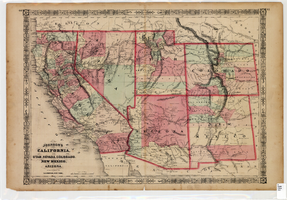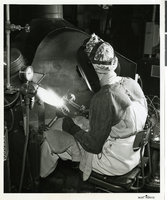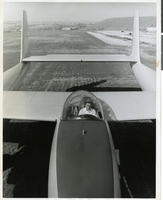Search the Special Collections and Archives Portal
Search Results
Weaver, Randy, New York Life, 1986 July 08
Level of Description
Archival Collection
Collection Name: Frank Mitrani Photographs
Box/Folder: Box 20
Archival Component

Photograph of the Lockheed 14 aircraft at Floyd Bennett Field, New York, July 10, 1938
Date
Archival Collection
Description
Image
Hughes Electronics Corporation Records
Identifier
Abstract
The Hughes Electronics Corporation Records (1935-2021) contain the files and publications of the corporate communications department and records donated by Robert K. Roney, a leading engineer at Hughes. These records document the growth of the company in Southern California, from building experimental aircraft for Howard Hughes, to developing and manufacturing radar and guided missile systems for the United States military and NATO forces, to developing and manufacturing communication satellites and space probes for NASA, and becoming the largest manufacturer of communication satellites and provider of satellite TV. The collection contains press releases, executive biographies, executive speeches, annual reports, corporate directories, organizational charts, correspondence files, technical reports and notes, promotional materials, as well as articles and publications detailing the history of the company. The collection also includes audiovisual materials and photographs. The audiovisual series details the history of the company through news footage and documentaries about Howard Hughes, aviation, corporate mergers, interviews with executives and promotional videos.
Archival Collection

Map of California, Utah, Nevada, Colorado, New Mexico and Arizona, 1864
Date
Description
Text
Script edits from Douglass Biggs and Howard Hughes, 1931 July 16
Level of Description
Archival Collection
Collection Name: Howard Hughes Film Production Records
Box/Folder: Box 043 (Restrictions apply)
Archival Component
Script edits from Howard Hughes and Robert E. Sherwood, 1931 July 31
Level of Description
Archival Collection
Collection Name: Howard Hughes Film Production Records
Box/Folder: Box 043 (Restrictions apply)
Archival Component
Howard Hughes talking with William Powell, Veronica Lake, André De Toth, and Johnny Meier, Hughes Public Relations head at the 21 Club in New York City, New York, 1946 February 17
Level of Description
Archival Collection
Collection Name: Howard Hughes Professional and Aeronautical Photographs
Box/Folder: Folder 07
Archival Component
Roy Pomeroy option agreement with Hughes Development Company for Multicolor equipment, 1931 July 16 to 1931 July 21
Level of Description
Archival Collection
Collection Name: Howard Hughes Film Production Records
Box/Folder: Box 516 (Restrictions apply)
Archival Component

Photograph of new atomic-hydrogen welding process, Hughes Tool Company, Houston, Texas, circa 1929
Date
Archival Collection
Description
Image

Photograph of Howard Hughes sitting in the cockpit of the XF-11 preparing for his first test flight in Culver City, California July 7, 1947
Date
Archival Collection
Description
Image
